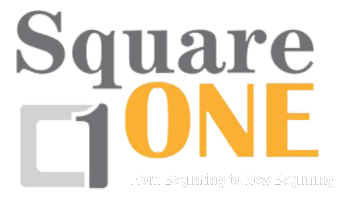Checking For Scoliosis: How To Tell If You Have It
Scoliosis is a condition in which the spine curves unnaturally. It can occur in children and adults and is caused by a few different underlying conditions. These conditions can include genetic factors, musculoskeletal imbalances, or neuromuscular disorders. Scoliosis can also be idiopathic, which means the cause is unknown. Idiopathic scoliosis is more common in children.
It’s essential to check for scoliosis if you suspect you may have it as the condition can worsen over time if left untreated. With that in mind, there are several ways to tell if you have scoliosis.
Why Early Scoliosis Detection Is Important
Early detection of scoliosis is crucial because it can help prevent the condition from becoming more severe. If left untreated, scoliosis can cause drastic changes to the shape of the spine, leading to chronic pain as well as reduced flexibility and range of motion. It can also lead to other issues, such as breathing problems and cardiopulmonary disorders.
Additionally, if scoliosis progresses, it can cause the spine to curve so severely that surgery may be necessary.
Signs Of Scoliosis To Look Out For
Because scoliosis causes the spine to curve to one side, there are often several hallmark symptoms. A scoliosis specialist can assess and diagnose these symptoms. With that in mind, the following are some of the physical symptoms of scoliosis that you should look out for:
Uneven Shoulders
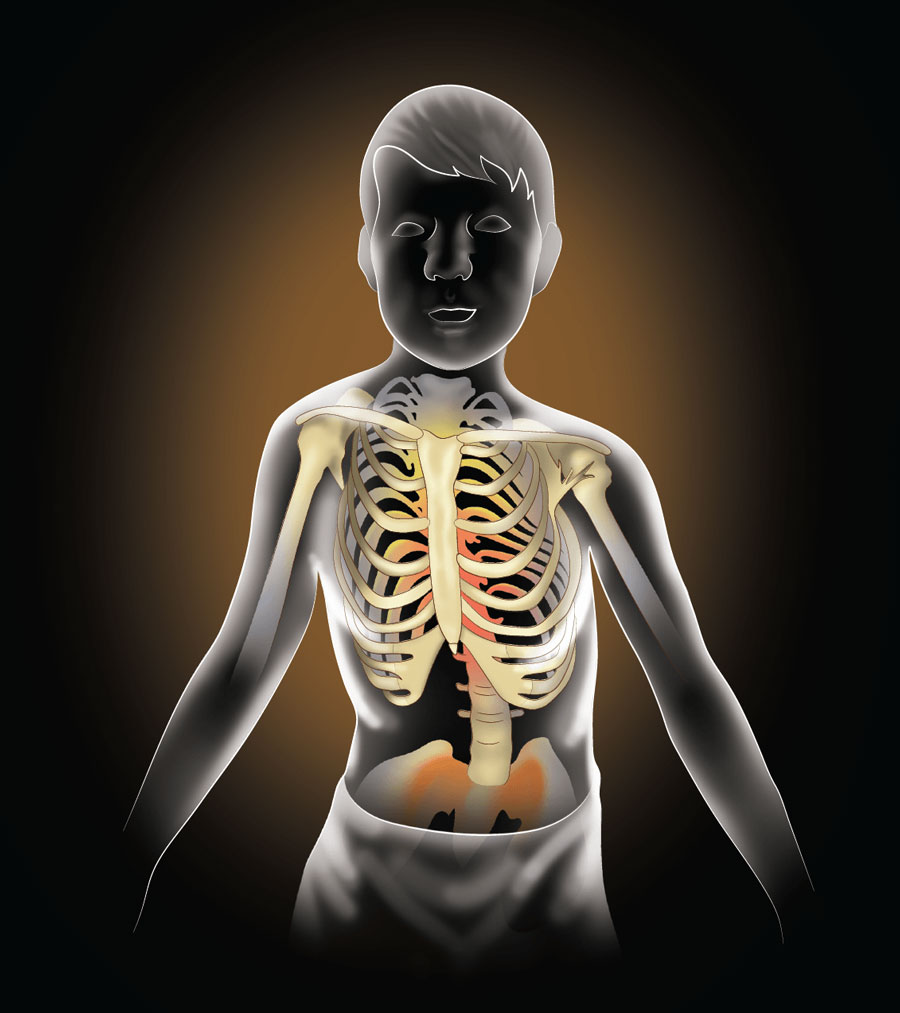
illustration of youth with uneven shoulders
If you have scoliosis, one of your shoulders may be higher than the other. This is because when the spine curves abnormally, it causes an imbalance in the musculoskeletal system. You can tell if you have uneven shoulders by comparing each side of your body when standing in front of a mirror.
A Prominent Shoulder Blade
With scoliosis, the spine doesn’t just curve to one side, it also rotates which causes rib humping, which may cause one shoulder blade to become more prominent than the other. If you stand with your back to a mirror and see that one shoulder blade is more pronounced than the other (meaning that it sticks out more), it could be a sign of scoliosis.
Rib Hump
The unnatural curvature and rotation of the spine can also cause the rib cage to stick out on one side, which results in a “rib hump.” If you run your hands along the front or back of your body and feel a lump near your rib cage, it could indicate scoliosis. A rib hump will also be more noticeable if you bend over at the waist and look at your body from the side.
Asymmetrical Waist
Another symptom of scoliosis is an uneven waistline. When viewing yourself from behind, you may notice that one side of your waist is higher or lower than the other. This is because when the spine curves unnaturally to the side, it can pull the waist to one side, making it appear uneven.
Uneven Hips Or Pelvis
If you have an asymmetrical waist (meaning, one side is higher than the other), it could also be a sign of uneven hips or pelvis. One hip may appear to be raised, while the other may appear to be lower. Additionally, one side of the pelvis may also be higher than the other. To check for this, stand facing a mirror and compare how your hips and pelvis look on each side.
Pain In The Back
In addition to the physical irregularities that a curved spine can cause, scoliosis can also result in chronic pain. Scoliosis can cause pain in your back as it puts extra strain on your muscles and joints. The pain can range from a dull ache to more severe or sharp pain.
Evaluating The Severity Of Scoliosis
Scoliosis can range from mild to severe. The severity of the condition is evaluated using the Cobb angle, which measures the degree of curvature in the spine. To be diagnosed with scoliosis, the Cobb angle must measure at least 10 degrees with rotation.
With that in mind, the level of severity is based on the following Cobb angle measurements:
- Mild scoliosis: 10-25 degrees
- Moderate scoliosis: 25-45 degrees
- Severe scoliosis: 45+ degrees
The evaluation process also involves other factors, including the patient’s age, skeletal maturity, and any associated symptoms, such as pain or breathing difficulties.
How To Detect Scoliosis At Home
Although there are physical signs you can identify by looking at yourself in the mirror (or having someone else look for you), physical irregularities are not always easy to spot. This is especially true if you have mild scoliosis.
Obviously, the most effective way to detect scoliosis is by getting a professional diagnosis from a scoliosis specialist. However, there are a few ways that you can detect the signs of scoliosis at home as well, such as the following:
Adam’s Forward Bend Test
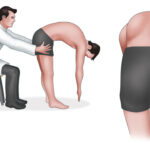
illustration of the Adam’s forward bend test
The Adam’s forward bend test is a basic test often performed during physical exams, especially at schools. As such, it can be done at home as well. To do the Adam’s forward bend test:
- Stand with your feet together
- Bend forward from the waist
- Try to touch your toes
While doing this, you should have someone else check if your spine has a visible curvature. An unevenness between the two sides of your body will be apparent during the bend test if you have scoliosis. This test is more accurate when done with a scoliometer which measures rotation in the spine. It may also be helpful to take a photograph in this position to identify this.
Home Testing Options
In addition to using Adam’s forward bend test or simply looking in the mirror for signs of physical irregularities caused by scoliosis, you can also use an app called Scoliscreen.
This app is a quick and easy way to screen for scoliosis at home. You’ll need someone to look at your back to help you answer some questions about your body.
How Specialists Diagnose Scoliosis
The only way to properly diagnose scoliosis is by getting a professional evaluation from a scoliosis specialist. A specialist can identify the signs and symptoms of scoliosis, evaluate the severity of your condition, and provide the most suitable treatment options. The following are a few methods that a specialist may use to diagnose scoliosis:
Digital Posture Analysis
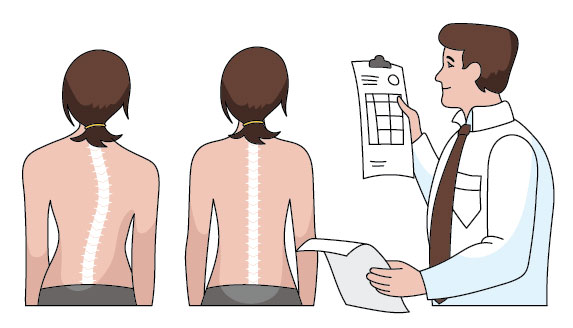
digital posture analysis illustration
Digital posture analysis is a process in which images of your posture are captured while standing. They will usually be taken from the side and the front. These images will then be analyzed using a sophisticated software program to identify postural imbalance, spinal stress, and poor spinal alignment, all of which can help diagnose the presence of scoliosis.
Range Of Motion Testing
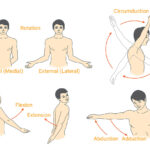
illustration of the range of motion test
The Range of Motion (ROM) test is used to evaluate the movement and flexibility of your spine. A scoliosis specialist will measure how much your spine can bend, turn, and twist in each direction. This test can help detect any areas of the spine that may be stiff or misaligned due to scoliosis.
Orthopedic Testing
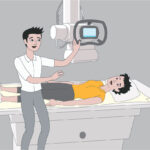
illustration of orthopedic testing
Orthopedic testing is a type of physical examination used to evaluate your muscles and joints. During this test, a specialist will assess the strength and flexibility of your spine and feel for any areas of tenderness, tightness, or misalignment. Doing so can help determine if any of your symptoms are related to scoliosis.
Neurologic Testing
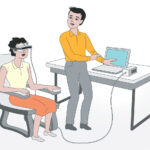
neurologic testing illustration
Neurologic testing is used to assess the neurological function of your spine. A scoliosis specialist will check your reflexes and nerve response, as well as the strength and sensation of your muscles.
This test can help determine if the curvature of your spine is causing any nerve or muscle damage. It can also help rule out neuromuscular conditions that might be causing your symptoms.
Imaging
Although physical examinations are an essential part of diagnosing scoliosis, the information they provide is only limited. Imaging is used to more thoroughly examine the bones, joints, and spinal alignment.
X-rays are the gold standard of imaging tests used to diagnose scoliosis as they provide detailed images of the spine and can detect any misalignment or curvature. In this way, imaging allows the specialist to provide an official diagnosis and determine the severity of the condition.
Specialists will also sometimes request a CT scan or MRI to determine if there are any underlying issues that are causing the condition.
Let Square One Health Help You
If you suspect you may have scoliosis, getting a professional evaluation as soon as possible is vital. At Square One Health, our medical specialists can provide a comprehensive diagnosis to identify if you have scoliosis, assess the severity of your condition, and determine whether there are underlying conditions.
We also offer customized treatment options for scoliosis to help alleviate symptoms, stop any progression, and reduce the curvature of your spine.
Get a proper scoliosis diagnosis to get the best available treatment options.
